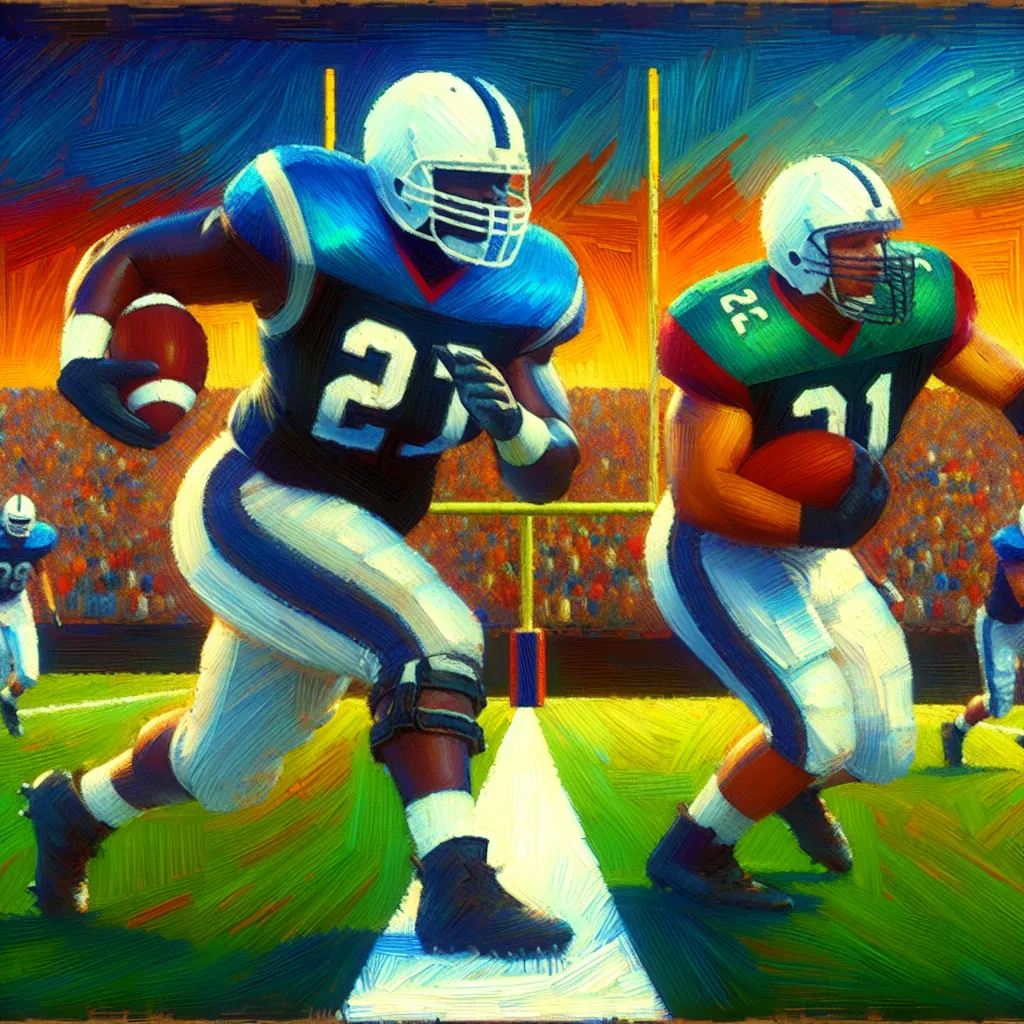
- Published on
- Authors

- Name
- Sports Tips
Working in Tandem: Coordination with the Left Tackle and Center
In football, the offensive line (O-Line) is the unsung hero of every successful play. Amongst these key players, the synergy between the left tackle (LT) and the center (C) is crucial for maintaining a solid line of defense and creating opportunities for the offense. Let's delve into the intricacies of this relationship and understand why seamless coordination, communication, and synchronized movements are essential.
The Roles and Responsibilities
Left Tackle (LT)
The left tackle protects the quarterback’s blind side, especially in pass plays. This is one of the most pivotal positions on the O-Line. Responsibilities include:
- Pass Protection: Guarding against the defense's fastest and most agile rushers.
- Run Blocking: Clearing paths for running backs.
- Quick Adjustments: Reacting with split-second decisions based on defensive formations.
Center (C)
The center is the cornerstone of the O-Line, responsible for:
- Snapping the Ball: Accurate snaps are crucial, whether in shotgun or under center formations.
- Reading the Defense: Calling out defensive alignments and making pre-snap adjustments.
- Blocking: Engaging in both pass and run blocking while dealing with the defensive line's interior pressure.
Importance of Communication
Pre-Snap Reads and Calls
Effective communication starts before the ball is snapped. The center typically initiates the pre-snap reads and calls, ensuring that the O-Line is aware of the defensive setup.
- Call-out Blitzes: Identifying potential blitzers and adjusting blocking schemes accordingly.
- Stunts and Twists: Recognizing defensive line movements that could disrupt the offense.
In-Play Adjustments
Mid-play adjustments are just as crucial, especially when defensive players shift or stunt.
- Verbal and Non-Verbal Signals: Using calls and hand signals to communicate in real-time.
- Mirroring Movements: Ensuring both LT and C move in unison to maintain pocket integrity and open running lanes.
Synchronized Movements
Combining Forces on Double Teams
In many running plays, a double team block by the LT and C is essential for creating significant gaps.
| Tactic | Description |
|---|---|
| Combo Blocks | Engaging the defensive tackle before one player peels off to take on a linebacker. |
| Drive Blocking | Working together to push the defender backward, creating a clear path for the runner. |
Pass Protection Schemes
Protecting the quarterback requires fluid, synchronized movements to counteract defensive strategies.
| Scheme | Coordination Tip |
|---|---|
| Slide Protection | Moving as a unit in the same direction to cover all gaps. |
| Man Protection | Each player takes on their assigned defender, requiring trust and understanding of each other's roles. |
Coaching Tips for Enhancing LT and C Coordination
Drills and Practice Routines
- Mirror Drills: Practice movements where the LT and C mirror each other’s steps and actions.
- Communication Exercises: Simulate in-game situations with mock defensive setups to improve pre-snap communication.
- Film Study: Reviewing game footage together can help identify coordination weaknesses and improvements.
Building Trust and Chemistry
- Team Building Activities: Foster a strong off-field relationship through regular team-building exercises.
- Consistent Pairing: Keeping the same pair of LT and C during practice can enhance their on-field chemistry.
In conclusion, the success of the offensive line hinges on the unyielding bond between the left tackle and the center. Through diligent communication, synchronized movements, and robust practice routines, they can form an impregnable front that guides their team to victory. Coaches, take the time to cultivate this relationship, and players, embrace the unity that comes with being part of this pivotal duo.
